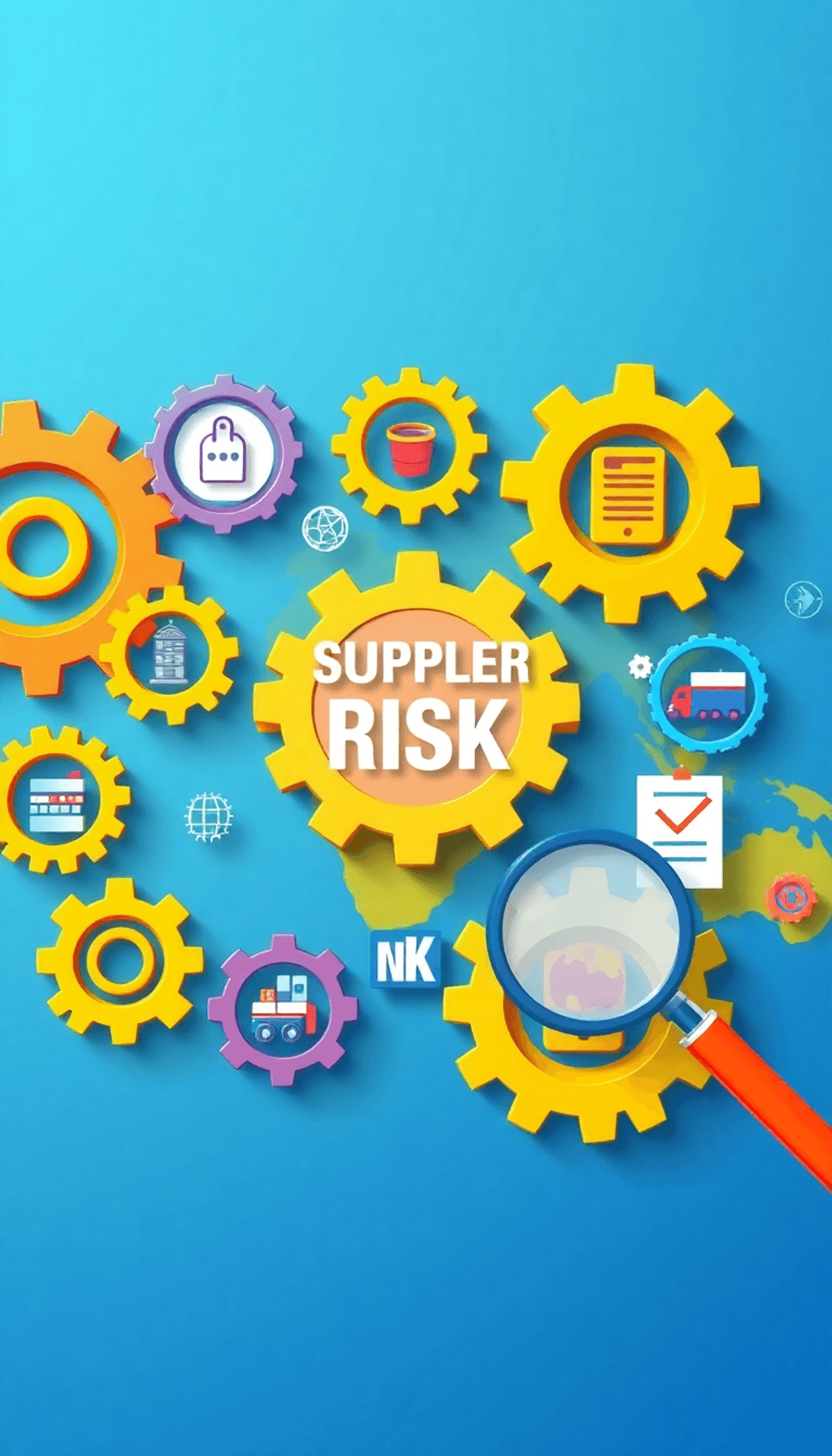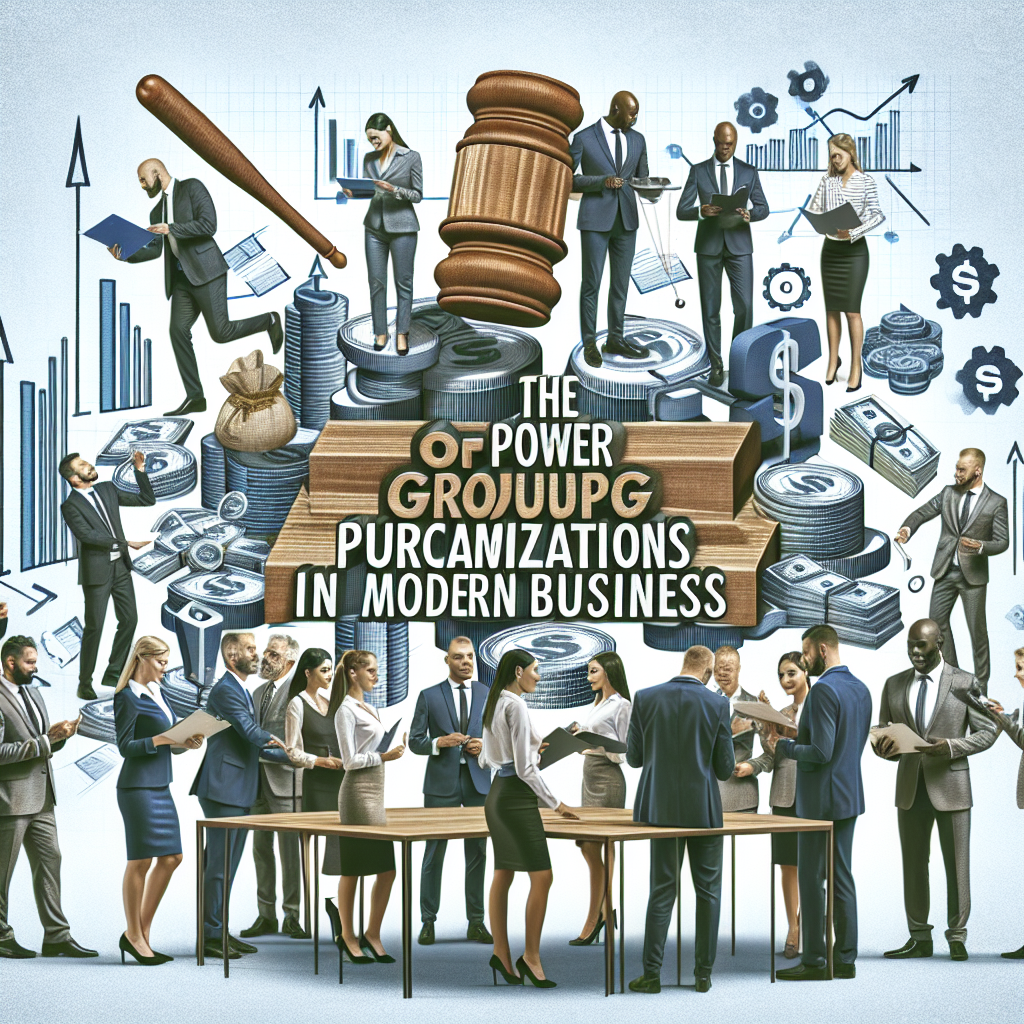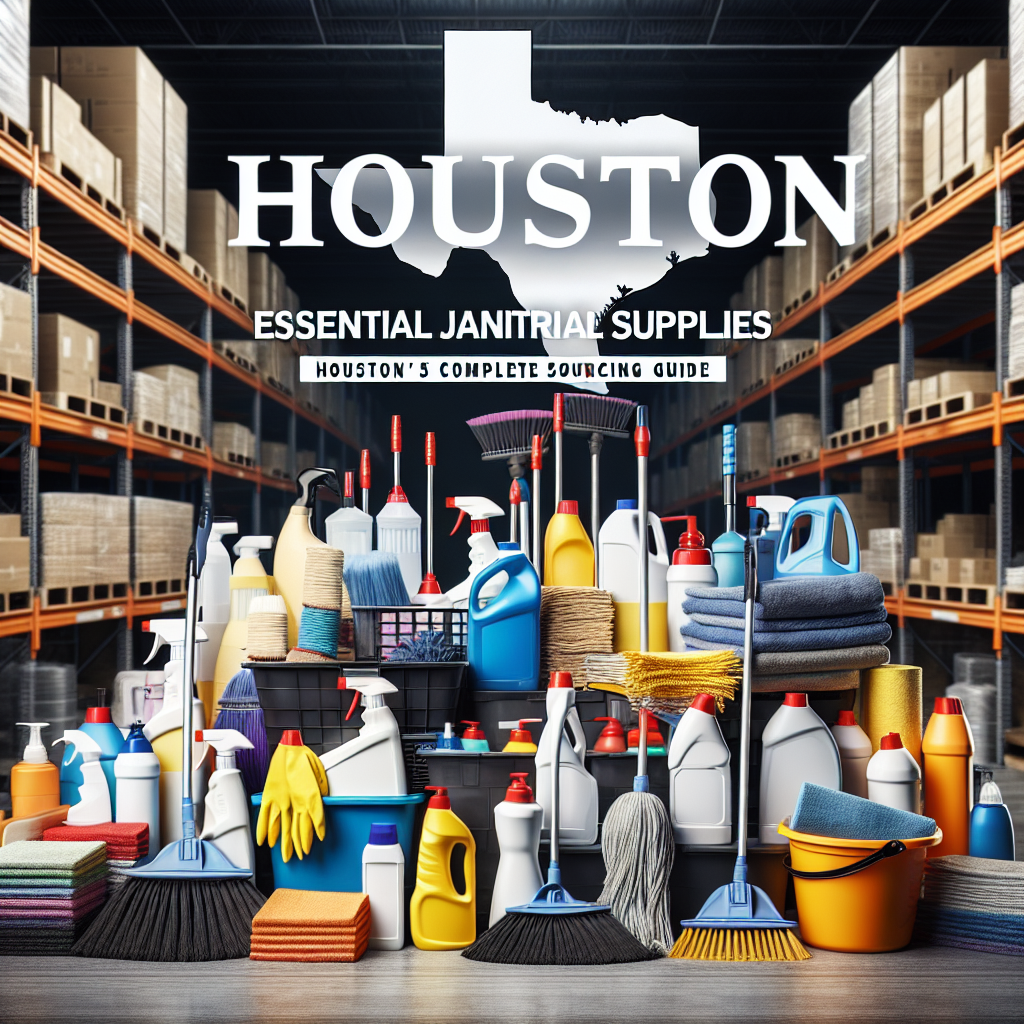Introduction
Supplier risk management involves identifying, assessing, and mitigating risks associated with suppliers within the supply chain. In today’s business landscape, this practice has become increasingly significant due to the rising complexity and interconnectedness of global supply chains. Such dynamics expose organizations to heightened vulnerabilities and uncertainties.
Key aspects include:
- Mitigating potential disruptions: Effective supplier risk management strategies are essential for safeguarding operations.
- Maintaining a competitive edge: Organizations that proactively manage supplier risks can navigate challenges more efficiently.
This blog post offers a comprehensive guide on various supplier risk management strategies. You will learn how to implement these strategies to ensure business continuity while addressing supply chain risks effectively.
For instance, tail spend management can be an effective strategy in mitigating potential disruptions by optimizing the procurement process. Furthermore, understanding how to maximize federal grant funding for nonprofits can provide additional financial resources to strengthen supplier relationships.
In addition, maintaining employee morale is crucial during challenging times. This can be achieved by boosting employee morale with break room supplies, ensuring that staff are well-supported and motivated.
Lastly, in sectors like healthcare where supplier risks can directly impact safety, it’s vital to have access to essential PPE for airborne precautions.
1. Understanding Supplier Risks
Supplier risks can be categorized into several types that significantly affect supply chain integrity and business operations. Key types include:
- Supply Interruptions: Events such as natural disasters, strikes, or logistical challenges can halt production and delay deliveries.
- Safety Crises: Safety incidents at supplier facilities can not only impact supply but also pose reputational risks.
- Information Breaches: Cybersecurity threats targeting supplier networks can lead to data leaks and financial losses.
Real-world examples illustrate the ramifications of these risks. In 2020, a fire at a semiconductor factory in Japan led to major disruptions for automotive manufacturers worldwide, resulting in billions in lost revenue. Similarly, the cyberattack on Colonial Pipeline in 2021 showcased how vulnerabilities in supplier systems could disrupt essential services, affecting numerous sectors.
Recognizing and categorizing these risks is crucial for effective risk management. Companies must assess their supply chains regularly to identify potential vulnerabilities and develop strategies tailored to mitigate these specific risks.
For instance, effective sourcing strategies for hiring top talent can help organizations find reliable suppliers who are less likely to pose risks. Furthermore, understanding the difference between purchasing groups and group purchasing organizations can provide insights into how to better manage supplier relationships.
Moreover, adopting frugal living strategies could help businesses save costs during uncertain times by maximizing resource utilization. Lastly, promoting diversity, equity, and inclusion (DEI) within supplier companies could lead to more resilient supply chains.
Understanding the sources of risk empowers organizations to create proactive measures for maintaining operational continuity amidst uncertainties.
2. Enhancing Supply Chain Visibility
Achieving complete visibility into the supply chain is essential for proactive risk identification and mitigation. When organizations understand their supply chains deeply, they can anticipate potential disruptions and respond swiftly.
Tools and Methods for Enhanced Visibility
To enhance supply chain visibility, organizations can utilize:
-
IoT Devices: These devices provide real-time data on inventory levels, production processes, and delivery statuses. Sensors can monitor environmental conditions affecting sensitive goods.
-
Blockchain Technology: This technology ensures transparency and traceability across the supply chain. By recording every transaction on a secure ledger, companies can verify the authenticity of their suppliers.
Common Challenges
Despite the benefits, companies face challenges in achieving end-to-end visibility, such as:
-
Data Silos: Different departments may use separate systems that do not communicate effectively.
-
Lack of Standardization: Inconsistent data formats across suppliers can hinder analysis.
Potential Solutions
To overcome these challenges:
-
Integrate Systems: Implementing integrated software solutions can break down data silos.
-
Standardize Data Formats: Establishing common data standards among suppliers streamlines information sharing and enhances performance monitoring.
Moreover, investing in procurement optimization can significantly enhance supply chain visibility. This includes adopting strategies that leverage technology and streamline processes for better efficiency.
While navigating these complexities, it’s crucial to remember that succeeding with limited resources is possible. By embracing constraints and optimizing processes, organizations can still achieve significant improvements in their supply chain operations.
Furthermore, staying updated with top trends in supplier innovation can provide valuable insights for organizations aiming to enhance their supply chain visibility.
Ultimately, investing in supply chain visibility leads to better risk analysis and strengthens an organization’s resilience against disruptions. For those looking to kickstart their career in this field, exploring entry-level procurement jobs could be a beneficial step.
3. Developing a Robust Risk Assessment Framework
Creating a comprehensive risk assessment framework is essential for effective supplier risk management. This process can be broken down into three key steps:
1. Risk Identification
- Identify potential risks that could impact suppliers, including financial instability, natural disasters, or compliance issues.
- Utilize tools like SWOT analysis or risk matrices to visualize and categorize these risks effectively.
2. Risk Evaluation
- Assess the identified risks based on their likelihood and potential impact on your organization.
- Employ qualitative and quantitative methods to prioritize risks, allowing you to focus on those that pose the greatest threat.
3. Contingency Planning
- Develop actionable plans to mitigate risks. This includes identifying alternative suppliers or creating response strategies for various risk scenarios.
- Regularly review and update these plans based on evolving circumstances.
Example: A Tier 1 HUBZone certified supplier utilized this framework by first identifying vulnerabilities in their supply chain during the pandemic. They evaluated how disruptions would affect service delivery and established contingency plans that included diversifying their supplier base. This strategic approach not only mitigated immediate threats but also enhanced their long-term resilience.
Implementing such a structured framework equips organizations with the necessary tools to navigate complexities in supplier relationships while safeguarding operations against unforeseen challenges. For businesses looking to secure reliable HUBZone certified suppliers, contacting us could be a beneficial step forward.
4. Ensuring Supplier Compliance Through Monitoring
Continuous monitoring for supplier compliance is essential to minimize disruptions caused by non-compliance issues. This proactive approach helps organizations maintain operational integrity and protect their reputation.
Key Strategies for Compliance Monitoring
1. Centralizing Documentation
Establish a centralized repository for all suppliers’ certifications and compliance records. Use cloud-based solutions or dedicated compliance management software to ensure easy access during audits.
2. Regular Audits
Conduct periodic audits of suppliers to verify adherence to established standards. Utilize checklists tailored to specific industry regulations for thorough evaluations.
3. Data Gaps Identification
Regularly assess documentation for completeness and accuracy. Address any data gaps promptly to prevent potential compliance failures.
By implementing these strategies, organizations can enhance visibility into supplier compliance status. Centralized documentation not only eases access during audits but also promotes accountability among suppliers.
As highlighted in Frank Corris’s transformative journey, continuous learning and strategic thinking are crucial in mastering procurement processes. This streamlined approach contributes significantly to risk mitigation efforts, ensuring smoother operations across the supply chain. It’s also important to be aware of certain procurement terms that may hinder effective communication about the value of procurement, which can further enhance compliance monitoring efforts.
5. Leveraging Technology in Supplier Risk Management
Technology serves as a crucial ally in managing supplier risks effectively. By integrating various software tools, organizations can enhance their capabilities in monitoring and assessing supplier performance.
Key technologies to consider include:
- Automated Risk Assessment Platforms: These tools streamline the identification and evaluation of potential risks. They analyze historical data to predict future risks, allowing you to take proactive measures.
- AI-Powered Predictive Analytics Tools: Utilizing machine learning algorithms, these tools analyze vast amounts of supply chain data. They identify patterns and anomalies, helping you foresee disruptions before they occur.
- Blockchain Technology: This offers enhanced transparency and traceability within supply chains. It ensures that all transactions are recorded securely, which aids in compliance checks and fraud detection.
- Internet of Things (IoT) Devices: IoT devices provide real-time data on inventory levels, shipment statuses, and environmental conditions. This information is vital for quick decision-making.
Implementing these technologies not only streamlines compliance checks but also fosters a resilient supply chain capable of adapting to changing market dynamics. By leveraging technology, organizations can stay ahead of potential supplier-related challenges while maintaining operational efficiency.
Furthermore, adopting strategic sourcing practices can lead to significant cost reductions through collective spend management. Building strong supplier relationships is also essential in mitigating risks and ensuring a smooth supply chain process.
6. Implementing Best Practices for Effective Supplier Risk Management
Adopting best practices is essential for organizations aiming to strengthen their approach to managing supplier risks. Consider the following strategies:
- Due Diligence: Conduct thorough assessments of potential suppliers before engagement. This involves evaluating financial stability, operational capabilities, and compliance with industry standards.
- Post-Entry Audits: Implement regular audits for existing suppliers to ensure ongoing compliance with contractual obligations and regulations. Continuous monitoring helps identify vulnerabilities early.
- Crisis Response Team: Establish a dedicated team trained to respond to supplier-related crises swiftly. This team should have clear protocols and communication channels to minimize disruptions during unexpected events.
- Supplier Risk Management Strategies: Develop tailored risk management strategies based on the specific characteristics and needs of suppliers. Consider factors such as geographic location, industry regulations, and historical performance.
Integrating best procurement software and outsourcing companies into your supplier risk management processes can significantly enhance resilience against disruptions. By maintaining a proactive stance, businesses can navigate complexities in global supply chains more effectively, ensuring stability and growth despite challenges.
For those managing a one-person procurement function, optimizing your approach with strategic solutions can lead to improved cost efficiency and supplier management.
7. Building Resilience Through Diversification Strategies
Building resilience in supplier risk management is essential for organizations facing potential disruptions. One effective approach involves diversifying the supplier base. This strategy ensures that businesses are not overly reliant on a single supplier, reducing vulnerability to unexpected interruptions.
Key Strategies for Diversification:
-
Multi-Sourcing Strategies: Engaging multiple suppliers for critical materials or services can mitigate risks associated with supply chain disruptions. By sourcing from various locations, you enhance flexibility and responsiveness to market changes.
-
Nearshoring Benefits: Bringing suppliers closer to home can significantly reduce lead times and shipping costs. Nearshoring enables better communication and stronger relationships with suppliers, which fosters collaboration and quicker responses to potential issues.
-
Buffer Capacity: Maintaining a buffer stock of essential materials can provide an additional layer of security against supply chain shocks. This strategy allows companies to continue operations smoothly while addressing any delays or quality concerns from suppliers.
Embracing diversification strategies strengthens your organization’s capacity to navigate uncertainties. By fostering a resilient supply chain through procurement in crisis, you create a more robust foundation for sustained business success, enhancing competitiveness in today’s dynamic market landscape.
Moreover, it’s crucial to understand that building resilience isn’t just about diversifying your supplier base; it also involves maintaining transparent communication with your suppliers. This transparency builds trust and fosters stronger partnerships, which are vital during tough times.
8. Fostering a Risk-Aware Culture Within Organizations
Creating a risk-aware culture is essential for enhancing organizational resilience against supplier-related risks. Employees at every level play a critical role in this process. Their awareness and adherence to established protocols can significantly mitigate potential disruptions.
Key components of fostering a risk-aware culture include:
-
Employee Training on Risks: Regular training sessions equip employees with the knowledge to identify and manage potential risks effectively. These programs should cover various scenarios, including supply chain interruptions and compliance challenges.
-
Encouraging Open Communication: Establishing channels for employees to report concerns or risks without fear fosters an environment where proactive risk management becomes part of the organizational fabric.
-
Integrating Risk Management into Daily Operations: Make risk awareness part of everyday tasks. This integration ensures that employees remain vigilant and consider supplier risks in their decision-making processes.
-
Leadership Support: Leaders must exemplify commitment to risk management practices. Their engagement encourages employees to prioritize these efforts, creating a unified approach across departments.
A strong risk-aware culture empowers organizations to navigate challenges swiftly, ensuring that all team members contribute to maintaining operational integrity.
9. Using Data Insights to Prevent Risks
Using data insights is crucial for managing supplier risks. By using advanced analysis methods like predictive modeling, organizations can foresee potential disruptions in their supply chains.
Benefits of Predictive Analytics in Risk Assessment
Here are some key advantages of using predictive analytics in assessing risks:
- Early Identification: Advanced algorithms analyze historical data to identify patterns that may indicate risks, enabling preemptive action.
- Improved Decision-Making: Access to real-time data allows teams to make informed decisions swiftly, minimizing the impact of any disruptions.
- Resource Optimization: Understanding potential risks helps allocate resources more efficiently, ensuring that critical areas are prioritized.
Enhancing Anticipation with Data Science
Data science applications enhance the ability to anticipate challenges effectively. For example, machine learning models can assess supplier performance metrics and market conditions, offering valuable insights into possible vulnerabilities.
Strengthening Resilience through Technology
Incorporating these technologies not only fosters a proactive approach but also strengthens an organization’s resilience against supplier-related risks. As global supply chains become more complex, it is essential to use data effectively in order to maintain strong operations and achieve sustainable growth.
Understanding Financial Implications
Furthermore, it is important to understand the financial implications of these strategies. For example, if you’re considering a career as a procurement engineer, you might want to explore the 2025 procurement engineer salary trends, which could provide valuable insights into future job market expectations and factors influencing salary trends in this field.
Conclusion: Embracing an Integrated Approach Towards Supplier Risk Management
Implementing effective supplier risk management strategies is essential for safeguarding your organization against potential disruptions. Recognizing that no single strategy can provide comprehensive protection is crucial.
Consider the following steps:
- Integrate Diverse Strategies: Combine visibility, compliance monitoring, risk assessment, and technology to create a holistic approach.
- Focus on Business Continuity: Prioritize strategies that ensure ongoing operations despite unforeseen challenges.
- Tailor to Your Organization: Adapt these strategies to fit the unique context of your business, considering industry-specific risks and opportunities.
Furthermore, it’s important to maximize supplier performance by ensuring quality and reliability. By adopting an integrated approach, you empower your organization to navigate the complexities of modern supply chains more effectively. Each layer of protection contributes to a robust framework that enhances resilience and ensures business continuity. Engage actively with these strategies to fortify your operations against vulnerabilities in today’s interconnected market.
FAQs (Frequently Asked Questions)
What is supplier risk management and why is it significant?
Supplier risk management involves identifying, assessing, and mitigating risks associated with suppliers in the supply chain. Its significance in today’s business landscape stems from the increasing complexity and interconnectedness of global supply chains, which leads to heightened vulnerabilities and uncertainties. Effective supplier risk management strategies are crucial for organizations to safeguard their operations and maintain a competitive edge.
What types of supplier risks should organizations be aware of?
Organizations should recognize various types of supplier risks, including supply interruptions, safety crises, and information breaches. Understanding these risks is essential for effective risk management as they can significantly impact an organization’s finances and operations. Real-world examples illustrate how these risks can lead to disruptions that affect overall business performance.
How can organizations enhance supply chain visibility?
Complete visibility into the supply chain is vital for proactive risk identification and mitigation. Organizations can enhance visibility by leveraging tools such as IoT devices and blockchain technology. However, achieving end-to-end visibility may present challenges; companies must address these by adopting suitable solutions tailored to their specific needs.
What steps are involved in developing a robust risk assessment framework?
Developing a comprehensive risk assessment framework involves several key steps: risk identification, evaluation, and contingency planning. Organizations can implement these steps effectively by following practical examples or case studies that demonstrate successful approaches to managing supplier risks.
How does technology play a role in supplier risk management?
Technology enhances organizations’ capabilities to manage supplier risks effectively through various software tools and automation processes. Specific technologies such as automated risk assessment platforms and AI-powered predictive analytics tools can be utilized at different stages of the supplier risk management process to improve efficiency and accuracy.
What best practices should organizations adopt for effective supplier risk management?
Organizations should adopt key best practices such as conducting due diligence, implementing post-entry audits, establishing crisis response teams, and continuously improving their supplier risk management strategies. These practices help strengthen the overall approach toward managing supplier risks successfully.





